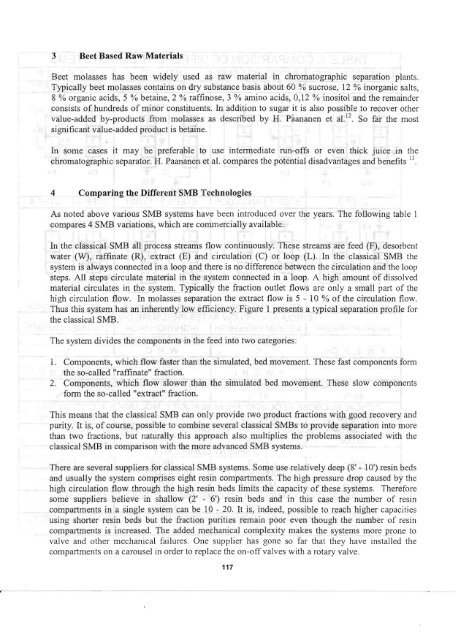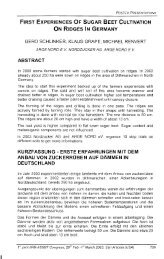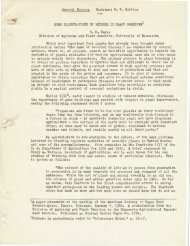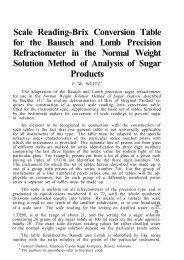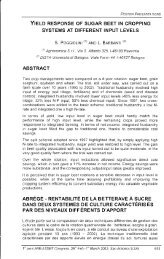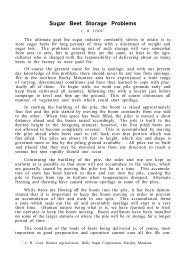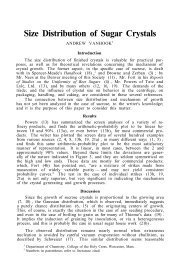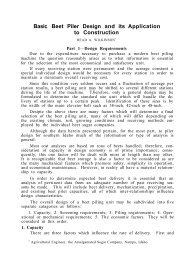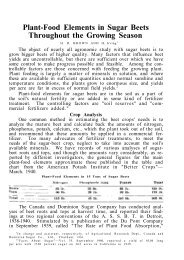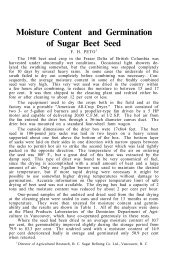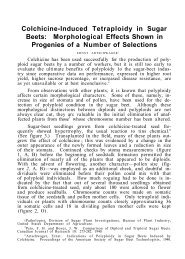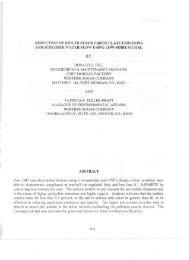New generation of molasses chromatographic separators using ...
New generation of molasses chromatographic separators using ...
New generation of molasses chromatographic separators using ...
You also want an ePaper? Increase the reach of your titles
YUMPU automatically turns print PDFs into web optimized ePapers that Google loves.
3 Beet Based Raw Materials<br />
Beet <strong>molasses</strong> has been widely used as raw material in <strong>chromatographic</strong> separation plants.<br />
Typically beet <strong>molasses</strong> contains on dry substance basis about 60 % sucrose, 12 % inorganic salts,<br />
8 % organic acids, 5 % betaine, 2 % raffinose, 3 % amino acids, 0,12 % inositol and the remainder<br />
consists <strong>of</strong> hundreds <strong>of</strong> minor constituents. In addition to sugar it is also possible to recover other<br />
value-added by-products from <strong>molasses</strong> as described by H. Paananen et a1. 12 . So far the most<br />
significant value-added product is betaine.<br />
In some cases it may be preferable to use intermediate run-<strong>of</strong>fs or even thick juice in the<br />
<strong>chromatographic</strong> separator. H. Paananen et al. compares the potential disadvantages and benefits 13 .<br />
4 Comparing the Different 5MB Technologies<br />
As noted above various 5MB systems have been introduced over the years. The following table 1<br />
compares 4 5MB variations, which are commercially available.<br />
In the classical 5MB all process streams flow continuously. These streams are feed (F), desorbent<br />
water (W), raffinate (R), extract (E) and circulation (C) or loop (L). In the classical 5MB the<br />
system is always connected in a loop and there is no difference between the circulation and the loop<br />
steps. AU steps circulate material in the system connected in a loop. A high amount <strong>of</strong> dissolved<br />
material circulates in the system. Typically the fraction outlet flows are only a small part <strong>of</strong> the<br />
high circulation flow. In <strong>molasses</strong> separation the extract flow is 5 - 10 % <strong>of</strong> the circulation flow.<br />
Thus this system has an inherently low efficiency. Figure I presents a typical separation pr<strong>of</strong>ile for<br />
the classical 5MB.<br />
The system divides the components in the feed into two categories:<br />
1. Components, which flow faster than the simulated, bed movement. These fast components form<br />
the so-called "rafflllate" fraction.<br />
2. Components, which flow slower than the simulated bed movement. These slow components<br />
form the so-called "extract" fraction .<br />
This means that the classical 5MB can only provide two product fractions with good recovery and<br />
purity. It is, <strong>of</strong> course, possible to combine several classical 5MBs to provide separation into more<br />
than two fractions, but naturally this approach also multiplies the problems associated with the<br />
classical 5MB in comparison with the more advanced 5MB systems.<br />
There are several suppliers for classical 5MB systems. Some use relatively deep (8' - 10') resin beds<br />
and usually the system comprises eight resin compartments. The high pressure drop caused by the<br />
high circulation flow through the high resin beds limits the capacity <strong>of</strong> these systems. Therefore<br />
some suppliers believe in shallow (2' - 6') resin beds and in this case the number <strong>of</strong> resin<br />
compartments in a single system can be 10 - 20. It is, indeed, possible to reach higher capacities<br />
<strong>using</strong> shorter resin beds but the fraction purities remain poor even though the number <strong>of</strong> resin<br />
compartments is increased. The added mechanical complexity makes the systems more prone to<br />
valve and other mechanical failures . One supplier has gone so far that they have installed the<br />
compartments on a carousel in order to replace the on-<strong>of</strong>f valves with a rotary valve.<br />
117


